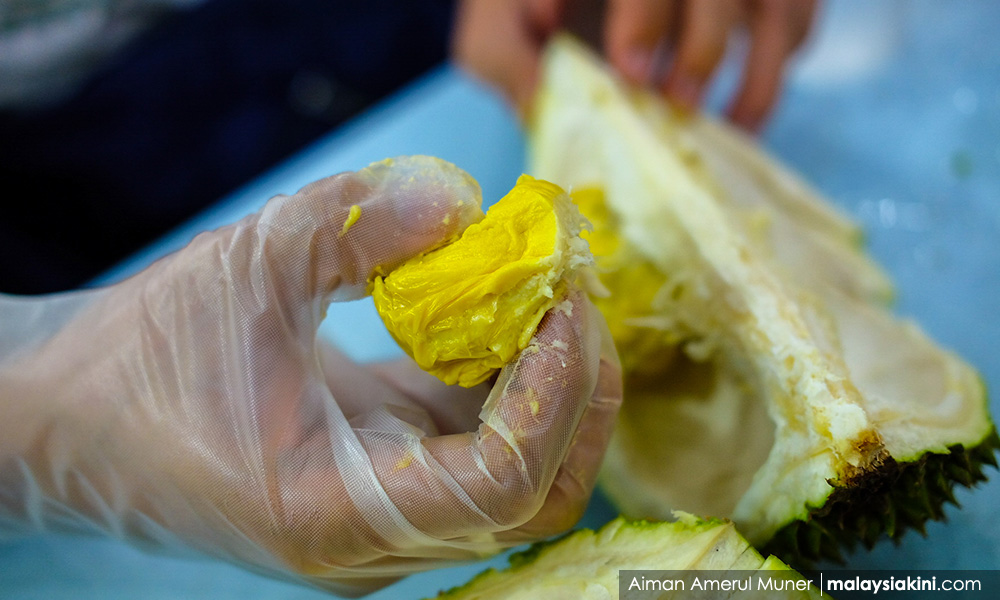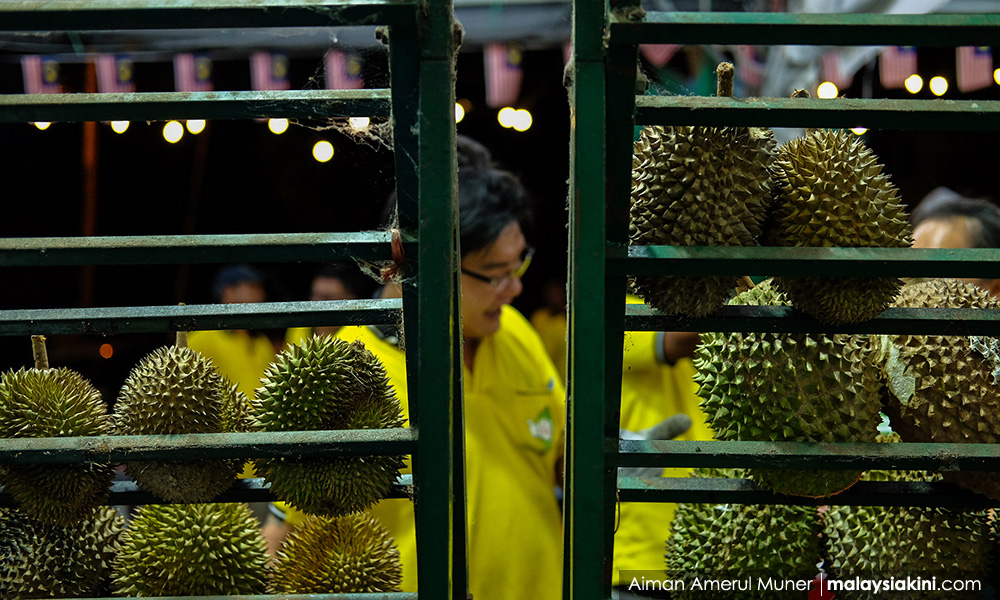Durians are famous (or infamous, depending on whom you ask) for their pungent smell, especially the fan favourites such as the Musang King cultivar.
Now, a team of researchers based in Singapore, Hong Kong and Malaysia have performed the first-ever whole-genome sequencing of a durian plant and published a draft of their data, using Musang King for their sample.
Their findings have also lent insight on how durians acquired their pungent smell.
"The resulting sequence reveals that (Durio zibethinus; a species of durians that include the Musang King and other economically vital durian cultivars) is closely related to the cotton and cacao plants.

"But it contains more copies of genes involved in the biosynthesis of volatile sulphur compounds - a major component of the durian’s scent," the Nature News reported yesterday, basing its report on a paper published in the sister publication Nature Genetics on the same day.
These sulphur compounds are what lend durian's pungent smell.
The reports also state that these gene pathways that lead to the creation of sulphur and other flavour-related compounds are expressed more strongly in the Musang King cultivar, compared to other two cultivars - the milder tasting Monthong and Puang Manee - that were used for comparison in the study.
The team of 16 researchers reportedly claimed that the genome map of the durian should allow scientists to identify genes involved in disease resistance and drought tolerance, according to Nature News.
Three plants shared a common ancestor
The researchers also claimed in their report that the genetic findings confirm earlier studies that durians are related to cotton and cacao plants.
Based on analysis of the durian's genes, they estimated that the three plants shared a common ancestor until between 62 to 85 million years ago when cacao began to diverge from the durian-cotton lineage.
Then, between 60 to 77 million years ago, durian and cotton plants began to diverge into separate species as well.

Meanwhile, Nature News also noted that ripe durian fruits express sulphur-related genes 2,000 times more strongly than unripe fruits.
It quoted the University of Nottingham (Semenyih) scientist Ahimsa Campos-Arceiz saying that the smell helps to attract elephants even from afar, which then consume the fruits and help the durian plants propagate by dispersing the seeds across the forest floor.
Campos-Arceiz is not involved in the durian sequencing study, but had previously co-authored a 2011 paper on the role of elephants in dispersing seeds in the forest as well as several related studies.
He had previously noted elephants were the only animals that could eat durians whole, including the thorny rind, and then excrete the durian seeds relatively intact.
Meanwhile, Nature News reported that apart from D zibethinus, there are at least 30 other species of Durio. Some of these are edible, while others are not.
“Unfortunately, several of these species are endangered.
“We hope to work with experts in the region to characterise the genomes of these other species, to protect their biodiversity and gain further insight into these fascinating plants," Duke-NUS cell biologist Patrick Tan is quoted as saying.
Tan was involved in the genome sequencing study, and reportedly helped conceive the study, directed, designed the project and interpreted the data.

